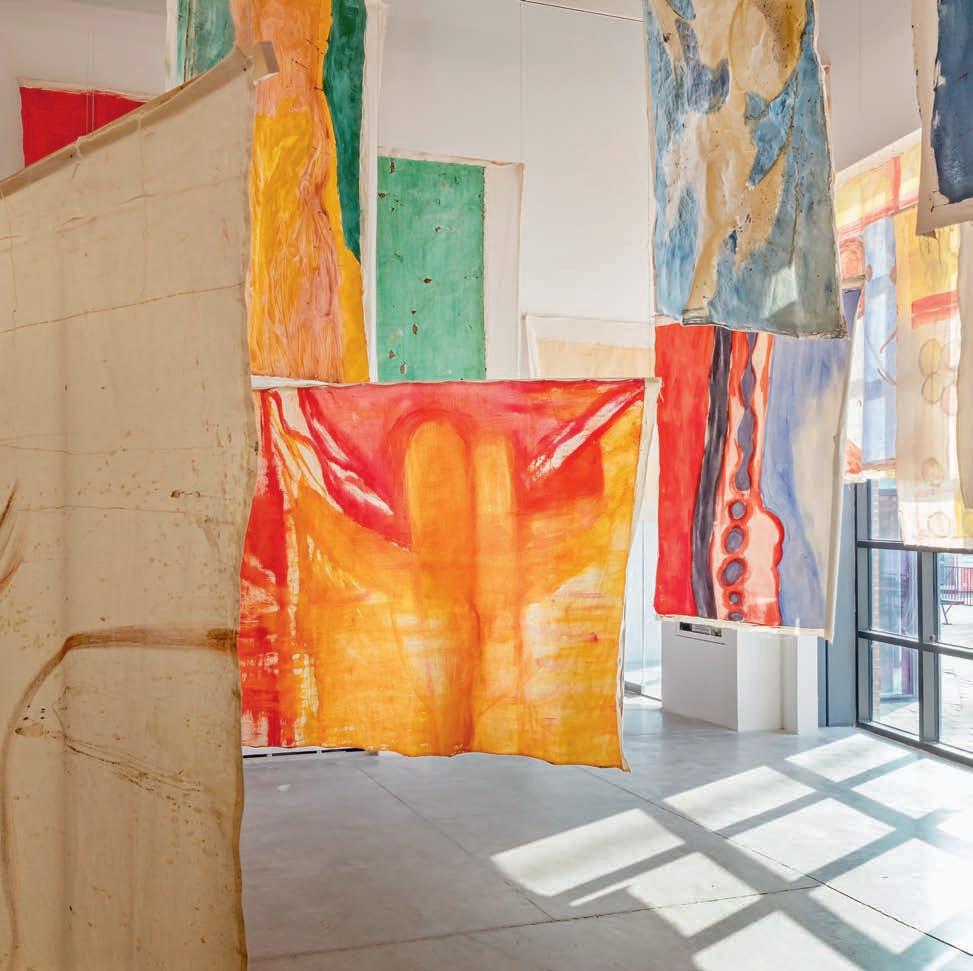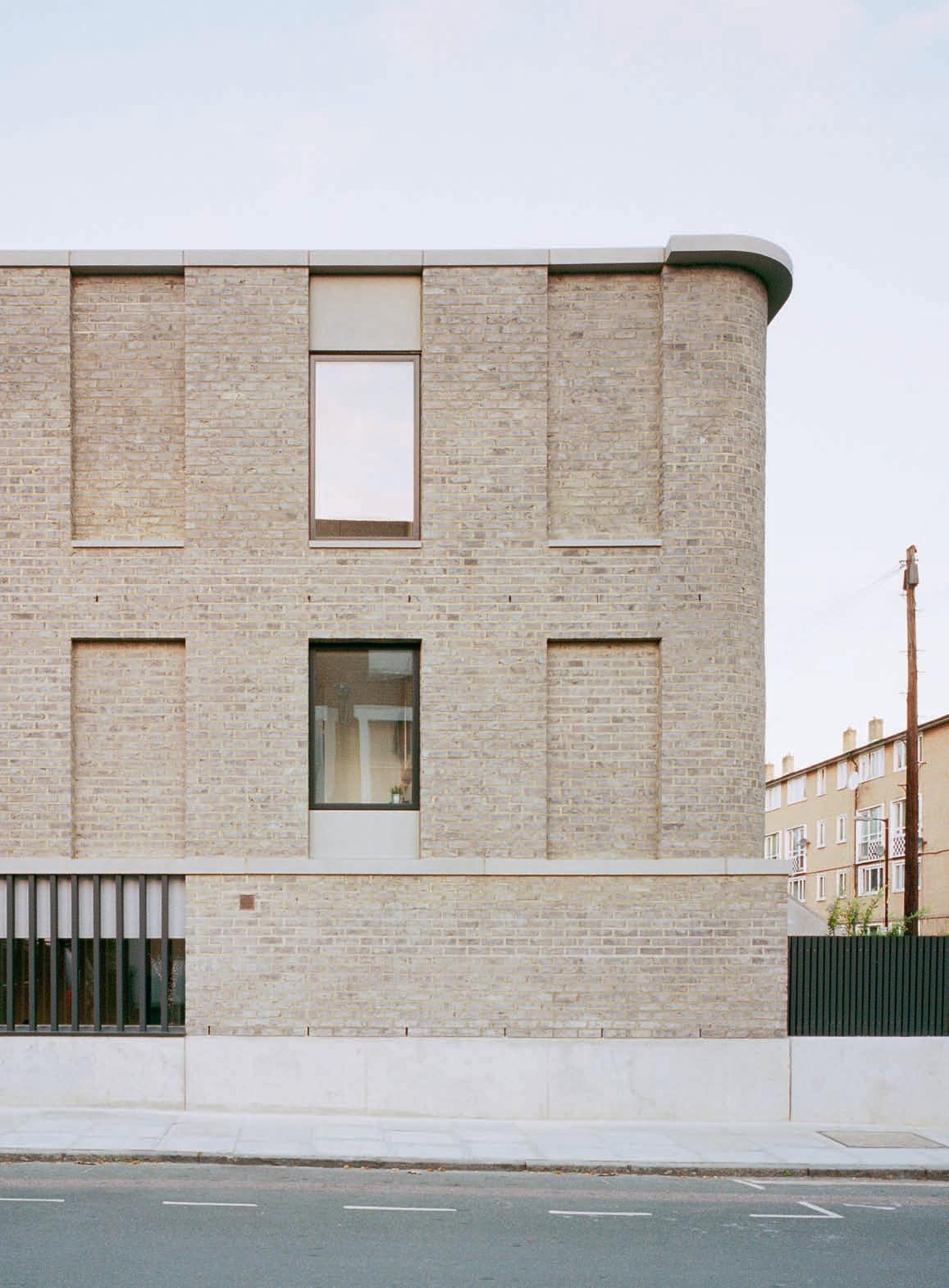
5 minute read
Street smarts The end-of-terrace gets a modern twist in this new-build by 31/44 Architects
Street smarts
A new home that mixes the familiar features of the Victorian terrace with a contemporary approach
Words / Jonathan Bell Images / Ben Anders, Rory Gardiner
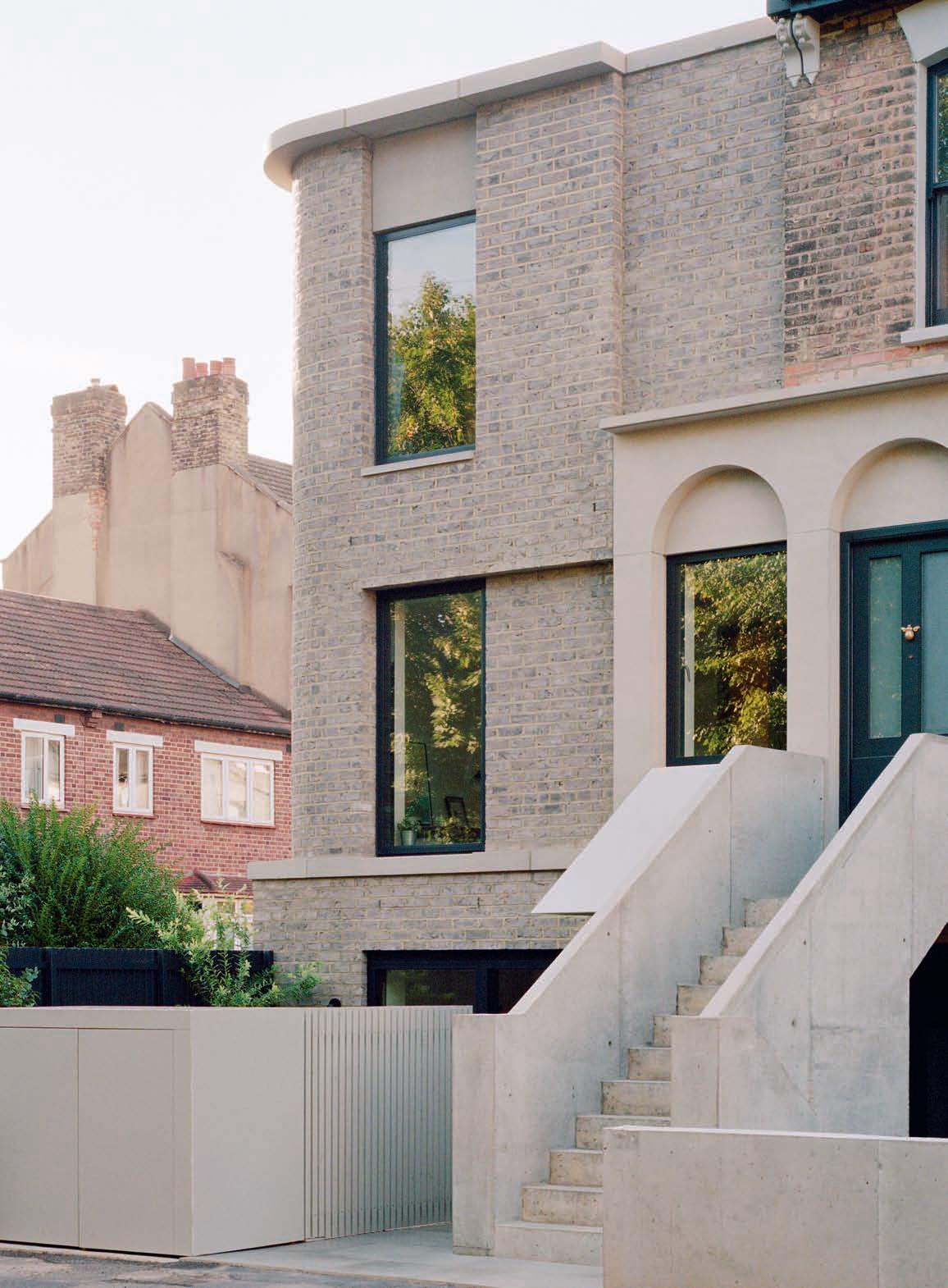
London has always been a fruitful hunting ground for the speculator. Swathes of the city came into being over the centuries thanks to the canny prospecting of architects, builders and developers (the latter often being a selftaught combination of the first two). It is to the speculator that we owe the majestic sights of the Georgian city, with its neat terraces and squares divided into first, second and third-rate housing as well as the massed ranks of soundly built Victorian and Edwardian villas, which are still delivering flexible space to many hundreds of thousands of Londoners.
As its name suggests, the Corner House by 31/44 Architects sits on a prominent site at the junction of two roads in south London. Its surrounding streets are a testament to the development fever that occupied the mid 19th century and include a surprisingly wide variety of architectural approaches. Local lore has it that one of the streets was set out by speculative builders in order to showcase their wares, with several different housing styles and scales. The overall context is eclectic, but with a uniformity of domestic scale and detailing. Into this environment comes the Corner House, an exercise in context that blurs the features of the existing terrace, adapting and emphasising others, and adeptly turns the street corner with a quietly sophisticated facade design.
Founded in 2010, 31/44 Architects was set up by Will Burges and Stephen Davies, who are

both former associates at Proctor & Matthews Architects. The studio has had a residential focus from the outset, with an emphasis on self-build – both partners have worked on at least one project for themselves. This has given them a rich understanding of the planning lore and architectural gymnastics needed to work on compact urban sites: “It’s very reassuring to clients that we’ve got our own hands dirty,” says Burges. Their portfolio includes projects like the award-winning Red House, a terraceterminating dwelling in nearby East Dulwich that weaves together space, privacy and texture. 31/44’s approach is epitomised by a conceptual project it completed for the Architecture Foundation called Alternative Histories, which involved a hypothetical collaboration with the Victorian Gothic revivalist Sir William Butterfield, and how his richly textured brickwork might react in an encounter with their contemporary materials and demands. Previous page The Corner House was once an endof-terrace garden
Facing page Concrete stairs lead up to the adjacent period house, which has been divided in to maisonettes
Above Blank windows subtly mirror the architecture of the surrounding streets
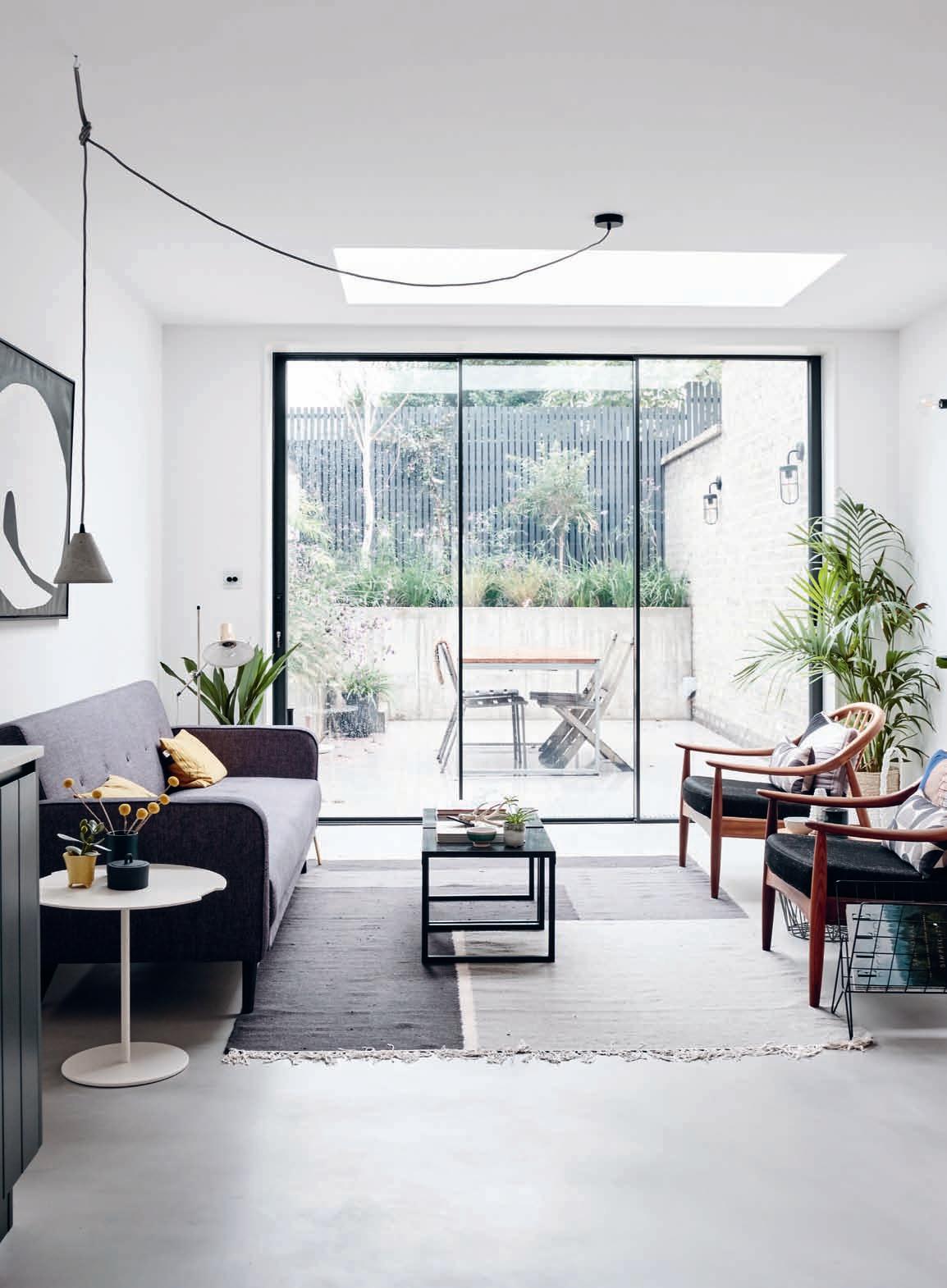
Facing page The site was excavated 1.2m to create an open-plan ground-floor living space, running the length of the building

Above A stepped rear facade makes the house appear less bulky from the road, and mimics an extended Victorian house
The Corner House is a rather more practical demonstration of these skills, showing an innate understanding of the form and scale of the adjoining terrace and the language of the streetscape. The grey stock London brick structure is a discreet piece of punctuation, a semi-colon rather than an exclamation point. “We like the idea that buildings can be part of the background,” Burges says. “Cities are noisy. Buildings don’t always need to shout.”
The client, developer Sara Mungeam, worked hard to maximise the site. Originally, the terrace was terminated by a single dwelling, set well back from the street on both sides. Permission was in place for an extension, but Mungeam refined and expanded the scope of what would be possible before venturing out to find like-minded architects. In 31/44, she found a firm with both local experience and a proven ability to maximise awkward plots.
The scheme extends the terraced row of houses, transforming the existing period house into two maisonettes, then digging down 1.2m and building over the former garden to create an entirely new three-bedroom house on the corner. As Burges says, “there’s continuity, but we’re also subverting it,” with elements like blank windows, the archway over the door and even the subtle curve on the corner itself all acknowledging and referring to the house’s surrounding context. Even the canopy over the new house’s lower-ground-floor door evokes the angle and rake of the new concrete stair to the adjoining maisonette, which in turn mirrors the external staircases of the original terrace.

Inside, the attention to detail and finish is deeply satisfying, testament to both architect and client’s involvement. “We always want to work for people who live in their houses and engage with them,” says Burges, and Mungeam effectively worked as a hands-on project manager, supervising every facet of the build and the finishes. Both agree that these spaces must work as places to live in, not just to look at. Full-height doors, a meticulously planned use of space and the ability to create multiaspect rooms come together to make this a cut above a more prosaic development job. “I didn’t want it to feel like a generic development,” says Mungeam. “I wanted a new-build project that made a stamp on the streetscape.” Thanks to the architects, that stamp is a welcome urban enhancement as well as a fine place to live. Facing page The kitchen has access to a small courtyard at the front of the house
Below A rooflight allows for privacy in the master wet-room

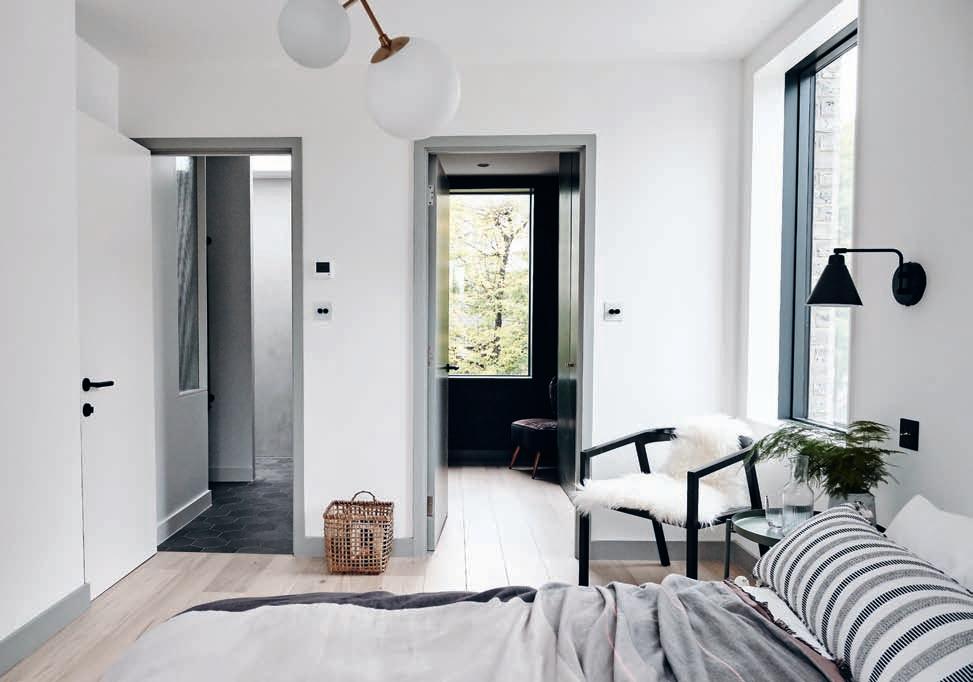
Above The interiors’ uniform restrained palette of black, white and grey is continued into the master suite Facing page Frameless windows provide unobstructed views over leafy south-east London


Greg Wood, 06. Experiential Plane, 2019
@OTOMYS WWW.OTOMYS.COM STUDIO@OTOMYS.COM
ART & COLLECTING A cultural review
